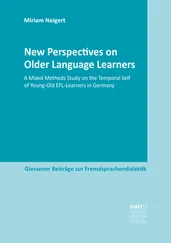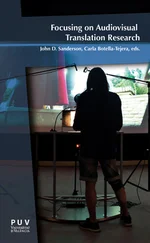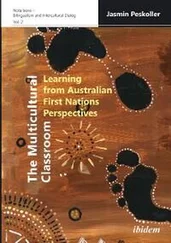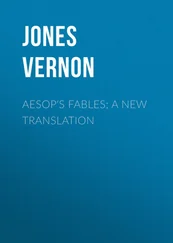The AVT industry has shown, in recent times, a landscape characterised by lower rates and, at times, abusive conditions imposed by some of the largest LSPs/TSPs. Previous studies, such as Kuo (2015), Bolaños-García-Escribano (2018) and Díaz-Cintas and Massidda (2019), have reported on the practices that prevail in the AVT profession at present.
3
Inroads of cloud technologies into AVT
AVT constitutes a technologically driven industry, wherein a myriad of revoicing and subtitling systems have traditionally been used to localise audiovisual material. Today’s migration of media localisation work into cloud environments is manifest when one looks at localisation and translation methods and workflows in the industry. Cloud-based subtitling platforms, for instance, which often offer pay-per-use rates, have lately encroached on the AVT technological landscape to the detriment of options. Cloud ecosystems have been used by large audiovisual media providers and LSPs/TSPs for decades in their attempt to move away from desktop-based solutions and increase access to translation tools among freelance linguists, thus acting as a driver of the so-called cloud turn (Bolaños-García-Escribano and Díaz-Cintas 2020).
Starting off in the late 1990s and spreading over the early noughties, cloud computing commenced as a market niche in many business industries for a period but has now outgrown the scarce early systems and experienced a quick and vast expansion around the globe. The exponential growth of cloud systems has led to a major turn in the ways we use applications and store information in the age of big data.
The most widely accepted definition of cloud computing is the one drafted by Mell and Grance (2011: 1) for the US National Institute of Standards and Technology:
a model for enabling convenient, on-demand network access to a shared pool of configurable computing resources (e.g., networks, servers, storage, applications and services) that can be rapidly provisioned and released with minimal management effort or service provider interaction.
Cloud systems often refer to «both the applications delivered as services over the internet and the hardware and systems software in the data centers that provide those services» (Armbrust et al. 2010: 50). Said systems provide service developers and users with resources that are typically offered on a subscription basis, which can be increased or reduced, and which include storage, database, information, testing, security and platform services (Linthicum 2010).
The two main economic benefits of cloud platforms seem to be the pay-as-you-go (also known as pay-per-use ) system in which users purchase the exact amount of time they need to use the services offered by cloud-based tools and, therefore, the savings on upfront outgoing capital (Armbrust et al. 2010). Another main advantage of cloud computing, which has undoubtedly propelled it into everyday computing at end-user level, is the delocalisation of file-based data storage. Storing data on the cloud reduces the costs on hardware and significantly increases the efficiency of data access by means of replacing hard drives with public data centre hosting services. Furthermore, cloud providers also offer application developers and users a stable environment for on-demand platform instances.
One of the main challenges posed by cloud computing nowadays is, however, the security factor, which can be perceived as the greatest inconvenience for the widespread adoption of the cloud across the globe. Cloud services usually market their infrastructures by putting an emphasis on secure cloud-computing environments, but there are still many threats that remain unknown to both developers and end-users (Vaquero et al. 2011). This is why users need to take extra caution with sensitive data (e.g. copyright material) on account of the multitenancy nature of cloud environments, whereby users store and share resources. This is highly relevant in the AVT industry, too, where materials are usually subject to confidentiality and copyright restrictions.
Generally speaking, cloud-based AVT tools are online solutions that support the management of revoicing and subtitling projects without resorting to desktop-based installations. They often include a workflow manager from the entry test to the onboarding of new freelance subtitlers, and some also offer an automatic invoicing application. Some tools offer free trials or decide to curtail access to certain features until the user acquires the full license (i.e. crippleware). AVT solutions ought to satisfy industry demands, so, for instance, most cloud-based subtitling tools have further integrated templates (also known as master files or first translations ), which are currently an enduring reality in the subtitling market (Georgakopoulou 2019, Nikolic’ 2015).
Cloud-based platforms have been progressively incorporated into translators’ workbenches by a rising number of agents and stakeholders operating in the translation industry in the past few years (Díaz-Cintas and Massidda 2019). These cloud tools are supposed to reduce costs, improve security against piracy, increase productivity and enhance connectivity among professionals by providing clients, vendors and end users with an online platform that utilises cloud computing to store files and process the data necessary to undertake any media localisation project.
International institutions are also embracing cloud-based technologies; for instance, the European Commission recently published its cloud strategy, defining its vision for cloud computing as «cloudfirst with a secure hybrid multi-cloud service offering» (2019: 3). The Directorate-General for Translation also combined cloud and machine learning technologies to create their cloud-native machine translation system (e-Translation 2 ), which they started to offer to European public administrations, small and medium-sized enterprises and higher-education language departments in 2017.
An increasing number of media localisation companies are undertaking the localisation of many types of audiovisual programmes with their newly developed proprietary cloud-native software. The first web-based proprietary subtitling system was launched by ZOO Digital (ZOOsubs 3 ) back in 2009. Since then, a wide range of cloud-based subtitling tools have been developed, many of which are proprietary and, therefore, available to be used exclusively by in-house and freelance translators employed by the companies that own them. One example of this is Netflix, which developed its Subtitle Originator and QC 2.0 to liaise with its preferred vendors. LSPs/ TSPs tend to grant access to said tools exclusively with their pool of translators at no cost. Although more widely used in subtitling, an increasing number of revoicing systems have emerged in the last few years too, some of which are exclusively offered on the cloud, such as ZOO Digital’s dubbing solution (ZOODubs 4 ).
Other platforms, like the one developed by Ooona 5 , are open to all practitioners and offer pay-per-use rates or annual licenses. In order to illustrate how these tools work, the next section includes a closer examination of Ooona’s Captions and Subtitles Toolkit 6 , which has been renamed Ooona’s Online Toolkit, or simply Ooona Tools, in more recent updates of the system.
4
Snapshot of a cloud-based subtitling tool: Ooona’s Captions and Subtitles Toolkit
This subtitling tool takes the form of a modular cloud-based platform (Figure 1) containing a series of individual applications (Create, Translate, Review, Convert, Compare, Burn & Encode, Create Pro, Translate Pro, Review Pro, Batch Convert, Transcribe, Closed Captions, Multilingual QC and View). These applications aim to cover the most common phases of any subtitling project, which range from the creation of files to the embedding of subtitles (Pagano et al. 2011). In addition, it allows the subtitler to (re-)encode videos, review translations and amend pre-spotted templates, among many other advanced tasks.
Читать дальше

![Михаил Лермонтов - A Hero of Our Time [New Translation]](/books/27671/mihail-lermontov-a-hero-of-our-time-new-translati-thumb.webp)










